
Learning processes Qualitative differences in placement experiences
 المؤلف:
Catherine Layton
المؤلف:
Catherine Layton
 المصدر:
Enhancing Teaching and Learning through Assessment
المصدر:
Enhancing Teaching and Learning through Assessment
 الجزء والصفحة:
P342-C29
الجزء والصفحة:
P342-C29
 2025-08-01
2025-08-01
 422
422
Learning processes
Qualitative differences in placement experiences
There were qualitative differences related to being in the placement that were seen as likely to have an impact on the learning. The first area of difference was related to whether or not the experiences were 'new' or 'novel'. This is a distinction that exists in German, and not in English, but which is helpful here, in that 'new' experiences are those which have some similarity to previous experiences and 'novel' experiences are totally foreign to everything one has encountered before. Novel circumstances, it appears from this study, will raise the question of appropriate action more starkly than the new (Figure 1).
The type of work was also an issue: dealing with large numbers of demanding children, talking with parents coping with the impending death of their child, and so on have a high emotional and relational load compared to writing policies, or handing out food vouchers (Figure 2).
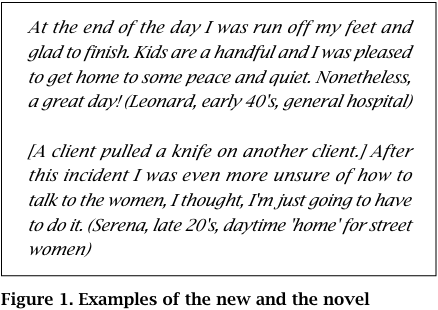
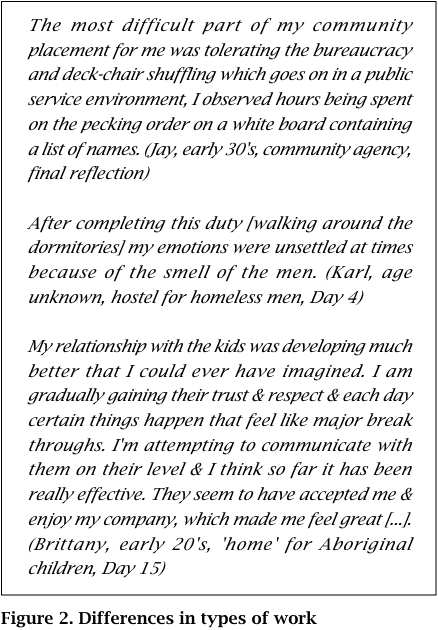
The intensity of the work was the third area of variation: some students had little to do, and were even encouraged by staff in the placement to undertake their reading in work-time, while others rushed from one job to another in 12 hour shifts, sometimes with a heavy emotional load (Figure 3).
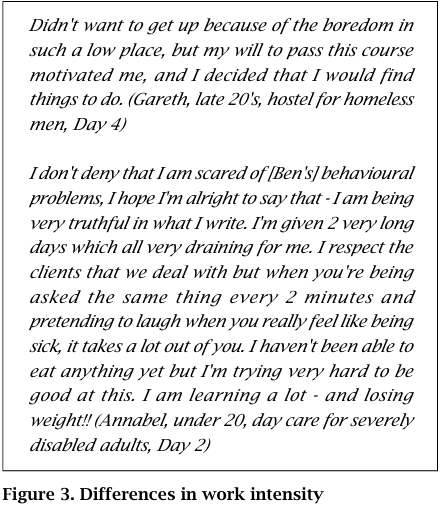
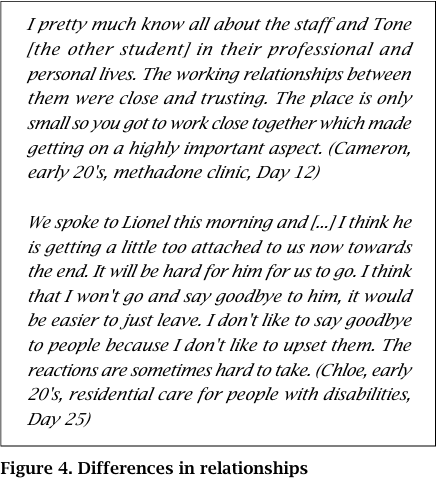
Relationships differed too (Figure 4). Some students were in small agencies with quasi-familial environments, others had teacher/pupil relationships either with the workers or the clients, and still others were seen as co-workers, representatives of the police, and so on. Sometimes the students had to trust their own judgement about what best to do about the relationships they had developed.
Chloe's solution leads into the final issue, which was that the level of guidance differed widely (Figure 5). This largely depended on the everyday composition of the workforce in the placement - in professional environments, students received guidance; where workers were largely well-meaning volunteers, there was often no guidance at all, and even inappropriate treatment. The students' capacity to improvise, and need to focus on the future, was far stronger when there was little guidance.
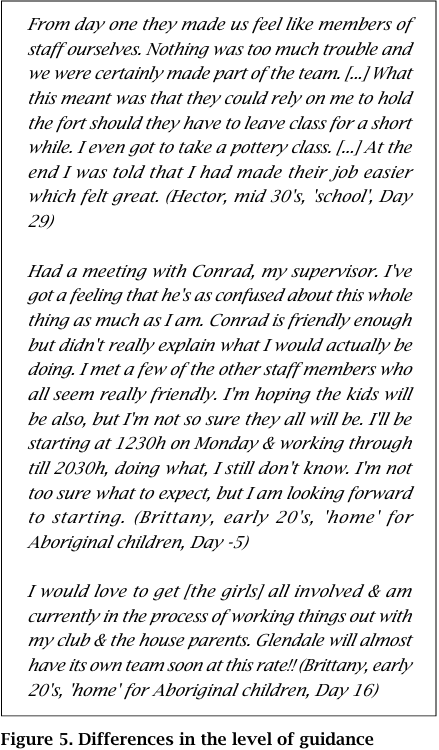
The variations in learning experiences cut across what students sensed, saw, heard, felt, thought and valued as they interacted with different people and practices.
 الاكثر قراءة في Teaching Strategies
الاكثر قراءة في Teaching Strategies
 اخر الاخبار
اخر الاخبار
اخبار العتبة العباسية المقدسة


